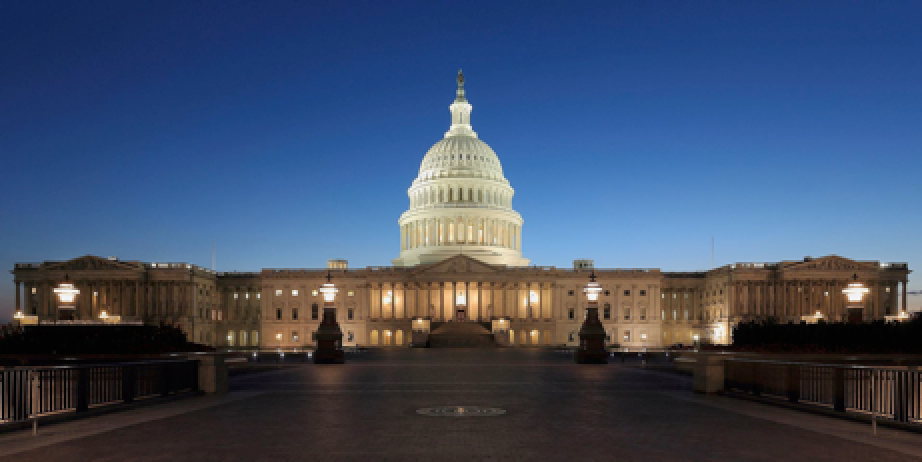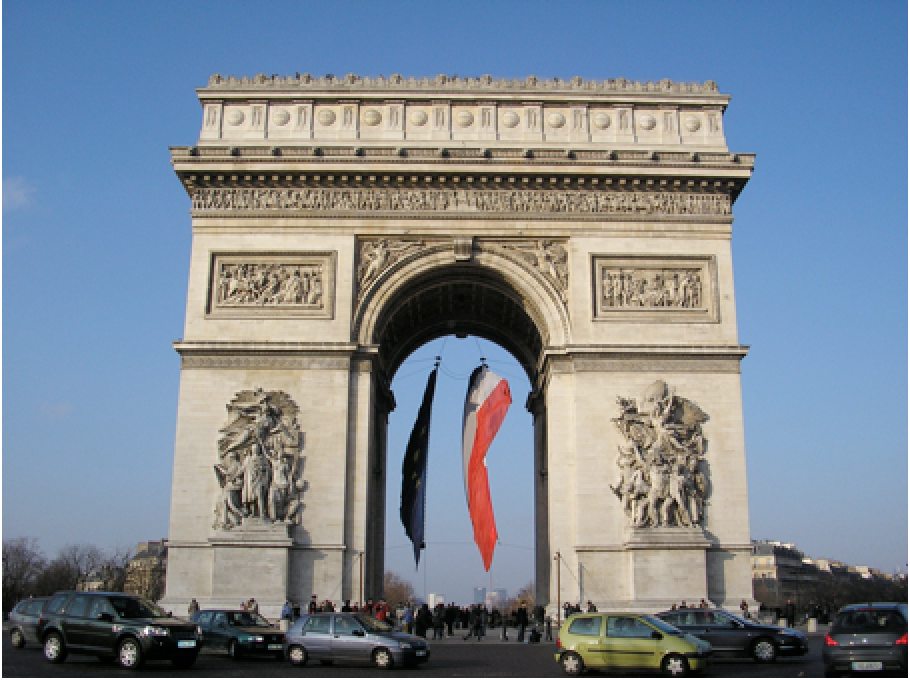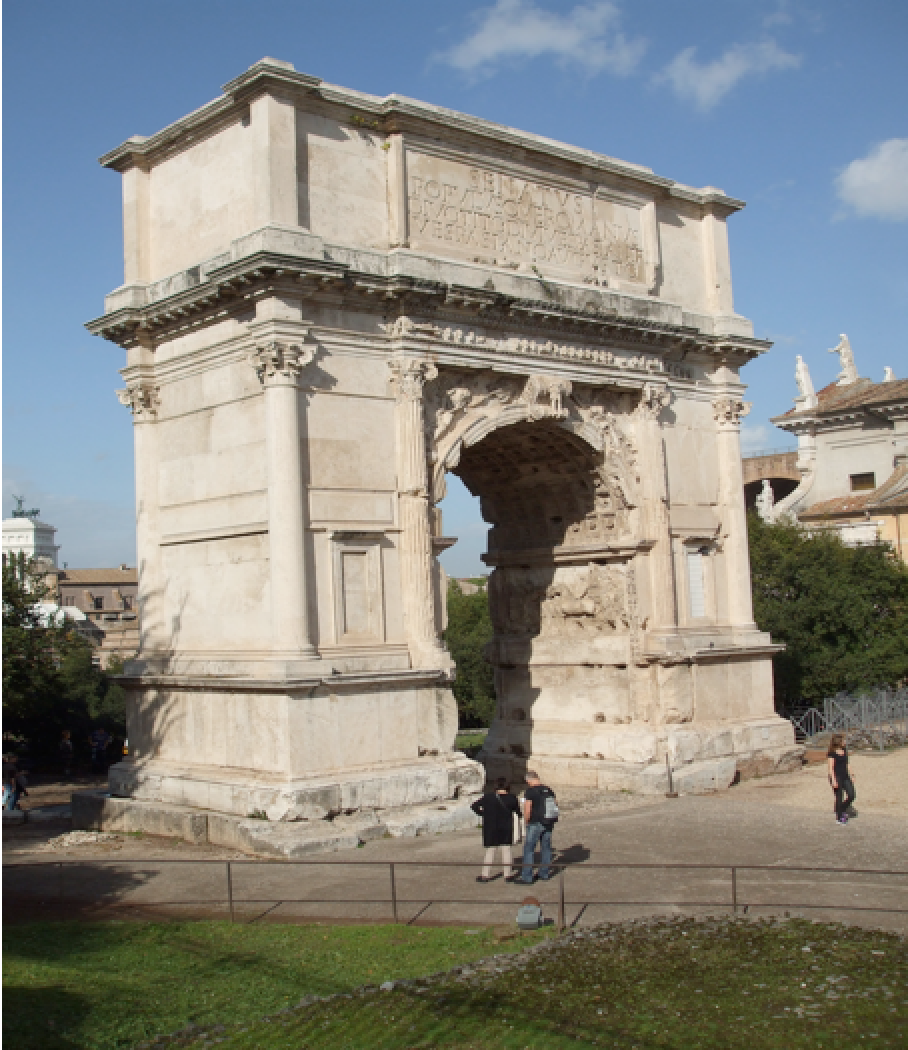This month Dr Diana Rowell, an Honorary Research Fellow at the University of Kent, reveals how Paris and Rome contain a Napoleonic view of the Classical Past. Diana is the author of Paris: The ‘New Rome’ of Napoleon I published by Bloomsbury in 2012. The University of Kent has postgraduate centres in both Paris and Rome
Timeless, chic, romantic, magnificent – these are but a few of the adjectives that spring to mind when attempting to define Paris, a city of many layers that has witnessed untold turmoil over the centuries, but managed somehow both to maintain a unique beauty and an air of magic, and its place as international hub of culture.
Panorama of Paris (The City of Light) from the Tour Montparnasse. Image: Benh Lieu Song via commons.wikimedia.org.
A number of years before crowning himself Emperor in 1804, Napoleon was already dreaming of a day when he would rule France and transform Paris into the most beautiful city imaginable:
“If I were master of France, I would make Paris not only the most beautiful city to exist and the most beautiful city to have existed, but also the most beautiful city that could exist.”
As his visions became increasingly ambitious, so he began to imagine still greater things for the capital of his empire: a beautiful city, yes, but also an unrivalled locus of culture and power that would challenge the best of them, including classical Rome (click here for a virtual tour of the ancient city).
Napoleon was fascinated by antiquity (and the world of the Romans, in particular); and when the ideology of Republican Rome no longer served his purpose, he turned to the Rome of the great emperors, that mighty imperial metropolis that once had ruled the world! Click here (and follow links) for details, and here for a great timeline and more!
Panini, G.P. Roma Antica, c.1757. Oil on canvas. Metropolitan Museum of Art, New York. Image: Google Cultural Institute via commons.wikimedia.org. Note the representation of celebrated structures such as the Arch of Constantine, the Colosseum and Trajan’s Column, as well as famed antiquities, including the Laocoön.
From antiquity, architecture has been employed as a powerful political tool; and an emblem of modernity and change. The monumental landscapes of Republican and Imperial Rome were brimming with structures that were able to convey messages via their visibility, form, function(s), composition, longevity, and their associated imagery, inscriptions and space.
As the epicentre of Rome, the Capitol (Temple of Jupiter) serves as a perfect example and, of course, it was not dissimilar in its fundamental role as such, to its modern namesake in Washington D.C. Like the Romans (and their forebears), we are acutely aware of the force and symbolic appeal of architecture: imagine, for a moment, the recent inaugural ceremony and transferral of power from Obama to Trump, without the eye-catching dome and neoclassical façade of the U.S. Capitol as stage.
U.S. Capitol Building, Washington D.C. Image: Martin Falbisoner via commons.wikimedia.org. Building began in 1793, and since then the U.S. Capitol has been ‘built, burnt, rebuilt, extended and restored’.
What of an instantly recognisable and ideologically-charged Parisian landmark? The Eiffel Tower is possibly the first attraction to be ticked off the average ‘been there, seen that’ list! As impressive as it is, Gustave Eiffel’s towering mass of iron does not stir the blood in quite the same way as certain other Parisian structures. The Arc de Triomphe, for instance, is not only right up there as a must-see (re-click above), but both it and the ground upon which it was built, possess deeply symbolic overtones and passion-filled pasts.
Whatever our perception of the Arc de Triomphe, it is hard not to be left with an indelible impression of this world-famous colossus that stands proudly at the summit of the Champs-Élysées. And although Napoleon was never able to parade in triumph beneath his monumental arch (at least not in the way that antiquity’s famed triumphators had entered Rome), it doubtless remains the most enduring testament to his military feats and symbol of the First Empire’s power.
The Arc de Triomphe de l’Étoile, Paris. Image: Diana Rowell. Although the first stone was laid in 1806 (on Napoleon’s birthday: 15 August), the structure was not completed until 1836 (well after Napoleon’s death in 1821).
Napoleon’s Arc de Triomphe was inspired (in part) by the Arch of Titus (c. 81-2 CE). Single-fornix triumphal arch: Forum Romanum, Rome. Image: Diana Rowell.
Napoleon’s iconic arch and the imperial capital’s other Rome-inspired projects will come into their own in later blogs, but for the moment it might be an idea to return briefly to the great man himself! Napoleon Bonaparte (né Napoleone di Buonaparte), a quiet and reputedly aloof youth with a strange Corsican accent, rose from nowhere to become master of France. An amazing feat to say the least, but perhaps more incredible still was his evolution from hero of the French Revolution to a sovereign whose rule found certain parallels with that of the most ‘absolute’ of French monarchs. To top it all, Napoleon was the nation’s first post-revolutionary ruler!
Gros, A.-J. Bonaparte on the Bridge of Arcole, c.1796/7. Oil on Canvas. Palace of Versailles. Image: The Yorck Project via commons.wikimedia.org. An embellished portrayal of Bonaparte as a dynamic and victorious Republican general at the Battle of Arcole (1796).
Click here for Ingres’ ‘Napoleon on his Imperial Throne’ (1806): an excellent example of how he was portrayed once his transformation from glorious hero of the Revolution to grandiose imperial emperor had taken place.
Just how the ever-enigmatic Napoleon managed to achieve this, and did so without losing his head to the guillotine (or yes, even being blown up), is a burning question that continues to baffle, and is far too complex a topic to be treated here! This said, the constantly changing nature of his rule, with the concurrent transformation of his capital, not only makes for an exciting read, but also allows us a unique glimpse into how Napoleon (and his entourage) strove to reshape Paris as a new and a singularly powerful ‘Rome’.
Vital to this relationship, is an understanding that Napoleon was far from alone in his plans to relocate ‘Rome’ in Paris. The respective ‘Romanisation(s)’ of Paris under Henry IV and Louis XIV are fine examples of this phenomenon, as are the visions of the French revolutionaries for a city that would reflect their staunch anti-monarchical beliefs, and draw on Republican, rather than Imperial, Rome. The contrasting ‘Roman’ landscapes of Paris had an enormous impact on the Napoleonic capital which, in turn, influenced the re-fashioning of the city as a ‘new Rome’ during the Second Empire: with the aid of Baron Haussmann, Napoleon III built and personalised existing structures; and created wide boulevards and a symmetrical network of roads that changed the face of Paris. Click here for Napoleon’s family tree, and see how his nephew, Napoleon III, and other well-known Bonapartes, fit in!
Having long believed in the merits of research into the reinvention of Paris as a ‘new Rome’ under Napoleon, I was delighted to come across the press release for Napoléon et Paris: rêves d’une capitale and to notice his unfinished urban dreams referred to as ‘an underestimated step towards Haussmann’s remodelling of Paris’! This compelling exhibition (8 April – 30 August 2015) focussed on his grandiose plans – both realised and visionary – for Paris as show-piece of the First Empire; and was held at the Musée Carnavalet to coincide with the premature fall of that empire two centuries previously.
‘Napoleon and Paris’ have also found their place across the Atlantic at the Museum of History in Gatineau, Canada: the exhibition (16 June 2016 – 08 January 2017), aptly named Napoleon and Paris, has only just closed its doors to the public and, as a reduced version of its somewhat grander Parisian counterpart (above), it is well worth a click for details!
Equally captivating is Charles Percier: Architecture and Design in an Age of Revolutions which is on view at the Bard Graduate Center Gallery; and includes exhibits that were instrumental in shaping the ‘Roman’ character of Napoleonic Paris. Those unable to get to New York might be interested to hear that the same exhibition will be held at the Château de Fontainebeau from 18 March – 19 June of this year!
The scene has been set for Napoleon and for his nephew, Napoleon III, but what of Napoleon II, and why do we hear relatively little about him? The simple answer is that he died prematurely and, other than ‘reigning’ for a few days as an infant, he was never to rule France as son and heir of Napoleon.
Once in possession of the Eternal City itself however, and ever eager to boost his profile and that of his empire, Napoleon was in a position to name his new-born son the roi de Rome. This was a hugely symbolic act which, albeit indirectly, ensured that Napoleon II would play a part in his father’s ambitious schemes to conquer the universe.
If you would like to explore a fascinating world of power relations in which Napoleon sought tirelessly to recreate an imperial metropolis of unparalleled magnitude that would embody his rule, then please take a look at this blog every so often – whether a student with a keen interest in receptions of the past, or someone who wants to acquaint themselves with an alternative Paris (or Rome) that’s off the normal tourist radar, I hope it will have something for you!
Napoleon Bonaparte: Timeline
*1769, 15 August: birth of Napoleon Bonaparte in Ajaccio, Corsica.
*1784, 30 October: Bonaparte enrols at the École Militaire in Paris.
*Revolutionary Year VIII, 18-19 Brumaire (9-10 November 1799): a coup d’état by Bonaparte begins the period of the Consulate.
*Revolutionary Year VIII, 28 Pluviôse (17 February 1800): legislation on the administrative organisation of France establishes the posts of Prefect of the Seine Département and Prefect of Police.
*Revolutionary Year IX, 3 Nivôse (24 December1800): an assassination attempt by royalists on Rue Saint-Nicaise.
*Revolutionary Year XI, 1 Floréal (21 January 1802): a decree orders acquisition of the land to be used for the future Rue de Rivoli, Rue Castiglione, and Rue and Place des Pyramides, which are opened up in 1804.
*Revolutionary Year XI, 28 Brumaire (19 November 1802): the Musée du Louvre is reorganised and placed under the direction of Vivant Denon.
*Revolutionary Year XIII, 11 Frimaire (2 December 1804): crowning of Napoleon I at Notre Dame. On 5 December the army swears loyalty to the emperor on the Champ-de-Mars.
*July 1806-August 1808: erection of the Arc de Triomphe on Place du Carrousel.
*1810, 1–2 April: Napoleon marries Marie-Louise.
*1810, 15 August: unveiling of the Vendôme Column.
*1811, 20 March: birth in Paris of Napoleon’s son Napoléon-François-Joseph-Charles, King of Rome and heir to the imperial throne.
*1812, 22–23 October: attempted coup d’état by General Malet.
*1813, 15 August: The Canal de l’Ourcq is opened to navigation.
*1814, 30 March: the Battle of Paris. On 31 March the anti-Napoleon coalition forces enter the city.
*1814, 4 April: Napoleon abdicates at Fontainebleau in favour of the King of Rome. On 6 April he abdicates unconditionally.
*1815, 1 March: Napoleon disembarks at Golfe-Juan. Beginning of the Hundred Days.
*1815, 1 June: at the “Champ de Mai” gathering, the nation swears loyalty to Napoleon.
*1815, 18 June: Battle of Waterloo.
*1815, 22 June: Napoleon abdicates again, declaring his son emperor under the name Napoleon II. On 29 June he leaves Malmaison and sets out for Rochefort; there he surrenders voluntarily to the English, who deport him to St Helena.
*1821, 5 May: Napoleon dies on St Helena.
*1840, 15 December: Napoleon’s remains are brought to Les Invalides in Paris.
*1861, 2 April: Napoleon’s coffin is placed in the tomb designed by Visconti.
*1864: the former Rue Militaire becomes the boulevards des Maréchaux.
*1871, 16 May: the Vendôme Column is pulled down.
*1875, 26 December: the statue of Napoleon is put back on the restored Vendôme Column.
Timeline: Exhibition Catalogue for ‘Napoleon and Paris: Dreams of a Capital’, held at the Musée Carnavalet, 8 April – 30 August 2015.
Bibliogaphy and further reading / viewing
Claridge, A. 2010. Rome: An Oxford Archaeological Guide (Oxford: Oxford University Press).
Forrest, A. 2011. Napoleon (London: Quercus).
Garric, J.-P. ed. 2016. Charles Percier: Achitecture and Design in an Age of Revolutions, catalogue for the exhibition held at the Bard Graduate Center Gallery, 18 November 2016 – 5 February 2017 (New Haven, CT: Yale University Press). The exhibition has been extended to 12 February 2017.
Gott, T., Huguenaud, K. eds. 2012. Napoleon: Revolution to Empire, catalogue for the exhibition held at the National Gallery of Victoria, 2 June – 7 October 2012 (Melbourne: NGV Publications). Click here for additional information.
Kleiner, D. E. 2014. Roman Architecture: A Visual Guide (New Haven & London: Yale University Press). If you fancy ‘attending’ a lecture or two by the author, click here!
Leith, R. A. 1991. Space and Revolution: Projects for Monuments, Squares, and Public Buildings in France 1789-1799 (Montreal: McGill-Queen’s University Press).
Rowell, D. 2012. Paris: The ‘New Rome’ of Napoleon I (London, New York: Bloomsbury).
Zanker, P. 1988. The Power of Images in the Age of Augustus (Ann Arbor, MI: University of Michigan Press).





